
Journal Articles
If you’re anything like me, you love reading journal articles. They provide in-depth analysis and discussion on topics that we find fascinating. In this instance, I’ve selected several Journal Articles related to my work involving Traumatic Brain Injury (TBI). Enjoy!
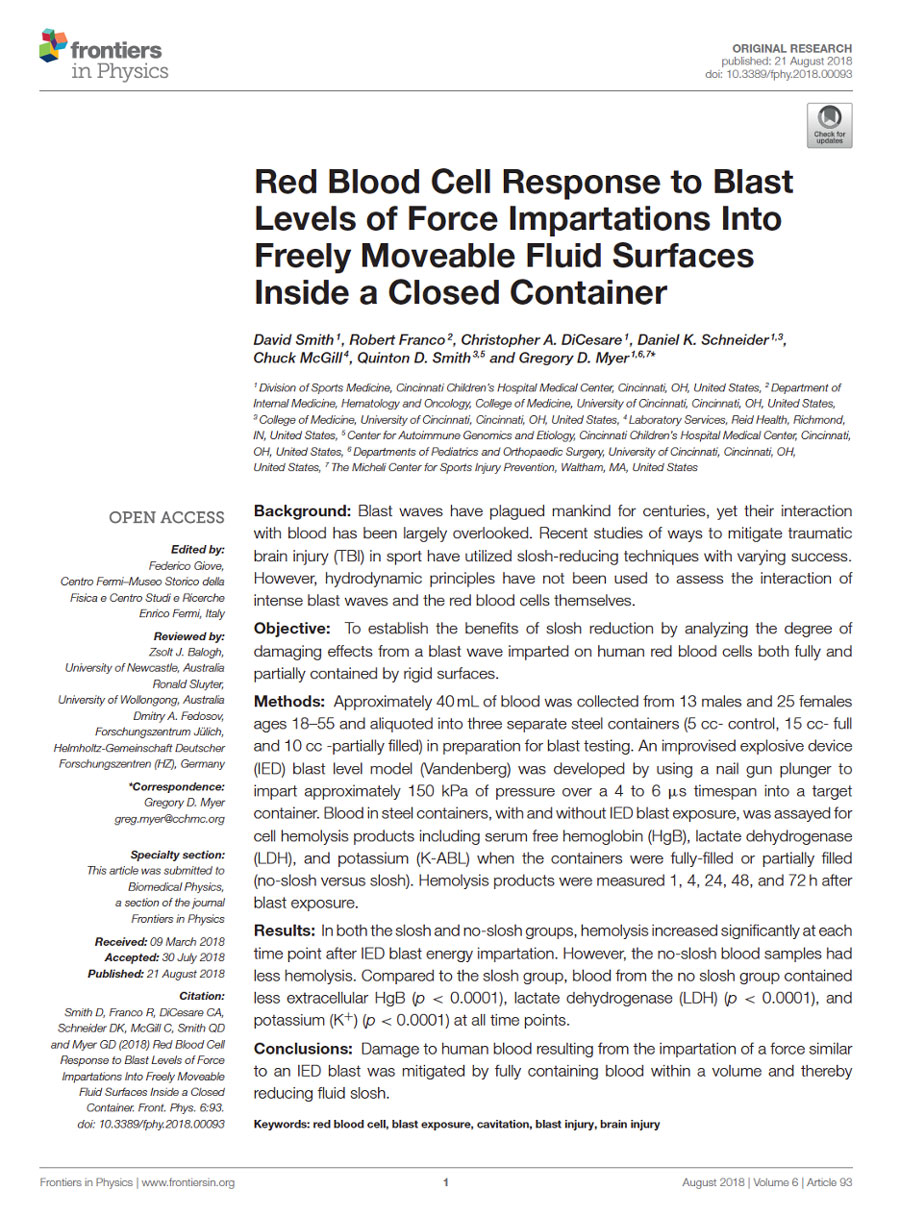
Red Blood Cell Response to Blast Levels of Force Impartations
Red Blood Cell Response to Blast Levels of Force Impartations into Freely Moveable Fluid Surfaces Inside a Closed Container | Frontiers in Physics | 21 August 2018 | Smith, et al.

Cranial Venous Blood Cavitation
√-Cranial Venous Blood Cavitation: A Possible Mechanism of Traumatic Brain Injury Associated with Blast Wave exposure and Head Impacts | Military Medicine | September 2017.

A Jugular Vein Compression Collar
A jugular vein compression collar prevents alterations of endogenous electrocortical dynamics following blast exposure during special weapons and tactical (SWAT) breacher training.

Mild Jugular Vein Compression Collar
Mild jugular compression collar ameliorated changes in brain activation of working memory after one soccer season in female high school athletes | Journal of Neurotrauma | 2017.
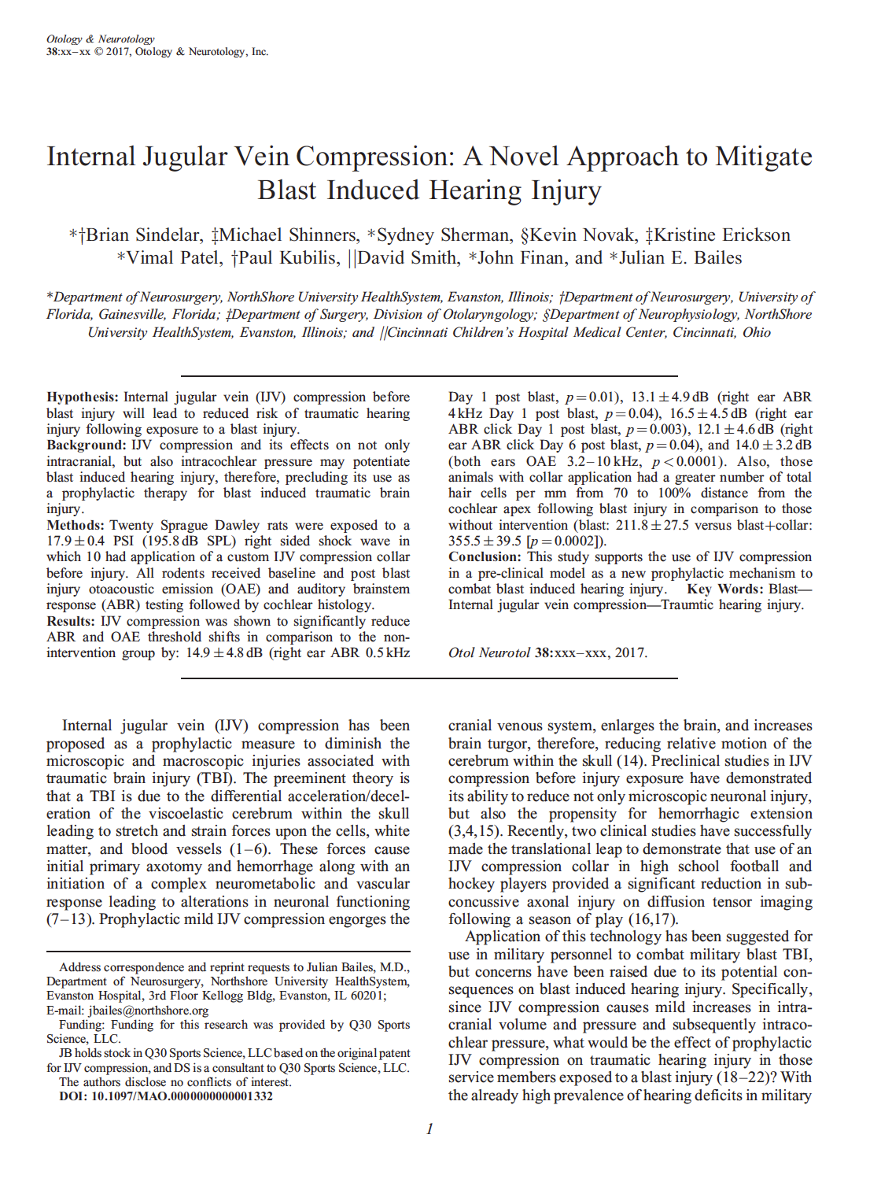
Neck collar with mild jugular vein compression
Neck collar with mild jugular vein compression ameliorates brain activation changes during a working memory task after a season of high school football, Journal of Neurotrauma · February 2017 DOI: 10.1089/neu.2016.4834
Internal Jugular Vein Compression
Neck collar with mild jugular vein compression ameliorates brain activation changes during a working memory task after a season of high school football, Journal of Neurotrauma · February 2017 DOI: 10.1089/neu.2016.4834

Effect of Internal Jugular Vein Compression
Effect of Internal Jugular Vein Compression on Intracranial Hemorrhage in a Porcine Controlled Cortical Impact Model, Journal of Neurotrauma 34(8) · August 2016, DOI: 10.1089/neu.2016.4648
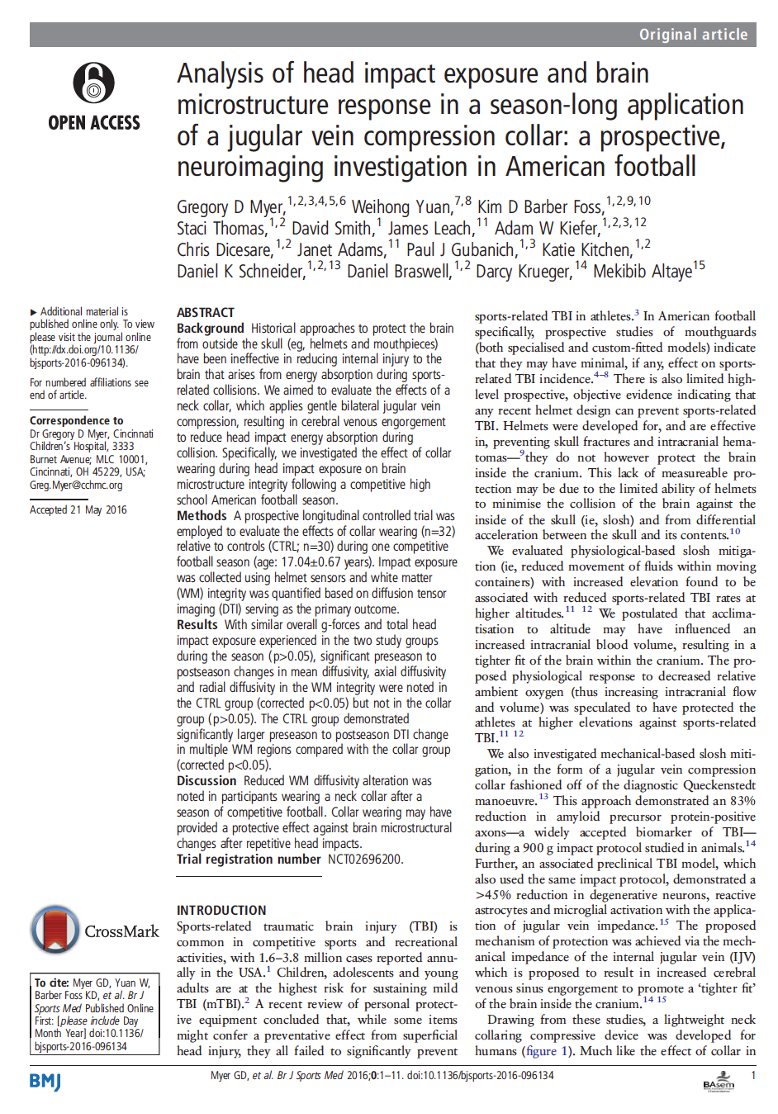
Analysis of head impact exposure
Analysis of head impact exposure and brain microstructure response in a season-long application of a jugular vein compression collar: A prospective, neuroimaging investigation in American football, British Journal of Sports Medicine 50(20): bjsports-2016-096134 · June 2016, DOI: 10.1136/bjsports-2016- 096134

Effects of External Jugular Compression
The Effects of External Jugular Compression Applied during Head Impact Exposure on Longitudinal Changes in Brain Neuroanatomical and Neurophysiological Biomarkers: A Preliminary Investigation, Frontiers in Neurology 7(24) · June 2016, DOI: 10.3389/fneur.2016.00074
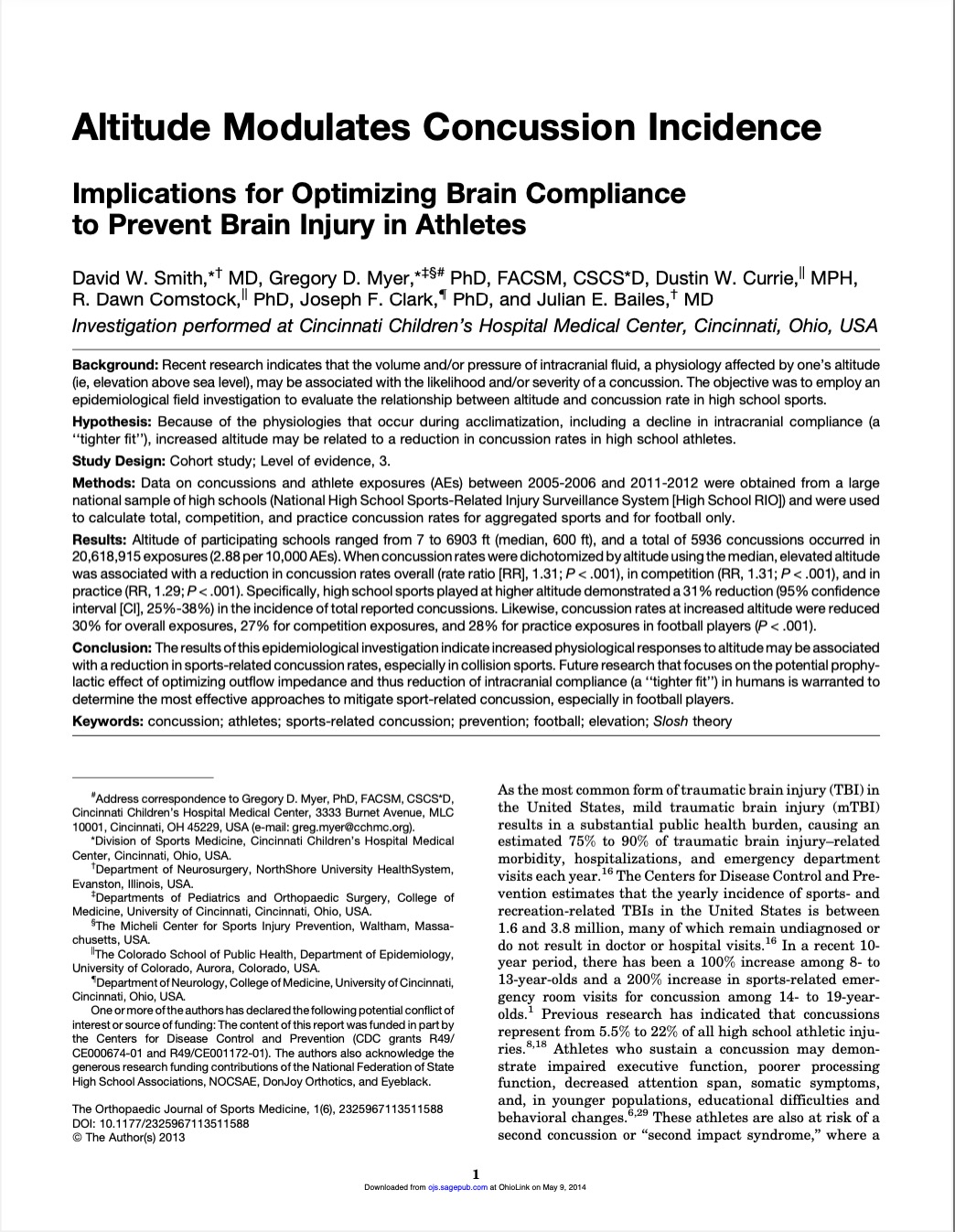
Altitude Does Not Reduce Concussion Incidence:
Altitude Does Not Reduce Concussion Incidence: Response, The Orthopaedic Journal of Sports Medicine 2(3) · March 2014, DOI: 10.1177/2325967114527235

Rates of Concussion Are Lower in NFL Games
Rates of Concussion Are Lower in National Football League Games Played at Higher Altitudes, January 2014, DOI: 10.2519/jospt.2014.5298

Altitude Modulates Concussion Incidence
Rates of Concussion Are Lower in National Football League Games Played at Higher Altitudes, January 2014, DOI: 10.2519/jospt.2014.5298

Effect of Slosh Mitigation
Effect of slosh mitigation on histologic markers of traumatic brain injury Laboratory investigation, Journal of Neurosurgery 117(6):1110-1118 · December 2012, DOI: 10.3171/2012.8. JNS12358
Internal Jugular Vein Compression
√-Internal Jugular Vein Compression Mitigates Traumatic Axonal Injury in a Rat Model by Reducing the Intracranial Slosh Effect, Neurosurgery 70(3):740- 6 · September 2011, DOI: 10.1227/NEU.0b013e318235b991
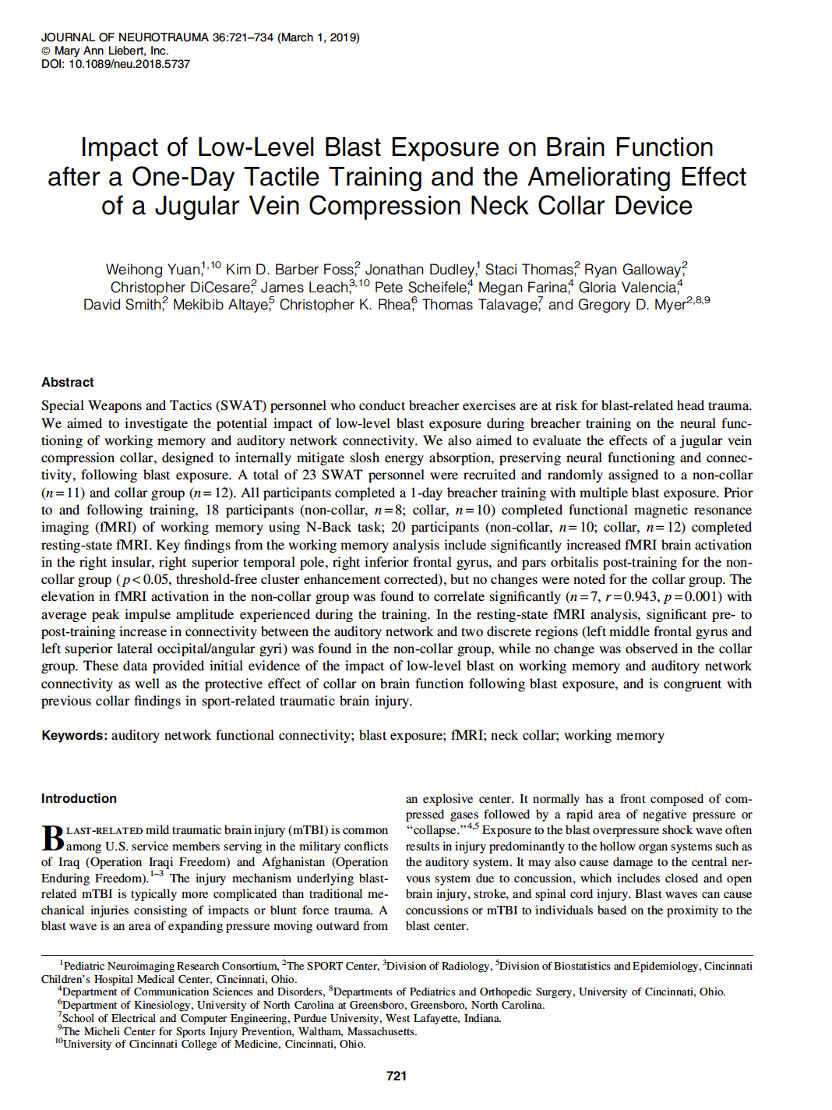
The Impact of Blast Exposure et al
The Impact of Blast Exposure and the Ameliorating Effect of a Collar Device: An fMRI study | The 24th Annual Meeting of the Organization for Human Brain Mapping, Singapore, June 17-21, 2018 | Yuan W, Barber Foss KD, Thomas S, Galloway R, DiCesare C, Dudley J, Leach J, Scheifele P, Smith D, Altaye M., Rhea CK, Thomas Talavage, Myer GD.
Increased Carbon Dioxide Respiration Prevents the Effects of Acceleration/Deceleration Elicited Mild Traumatic Brain Injury
Abstract—Acceleration/deceleration forces are a common component of various causes of mild traumatic brain injury (mTBI) and result in strain and shear forces on brain tissue. A small quantifiable volume dubbed the compensatory
reserve volume (CRV) permits energy transmission to brain tissue during acceleration/deceleration events.